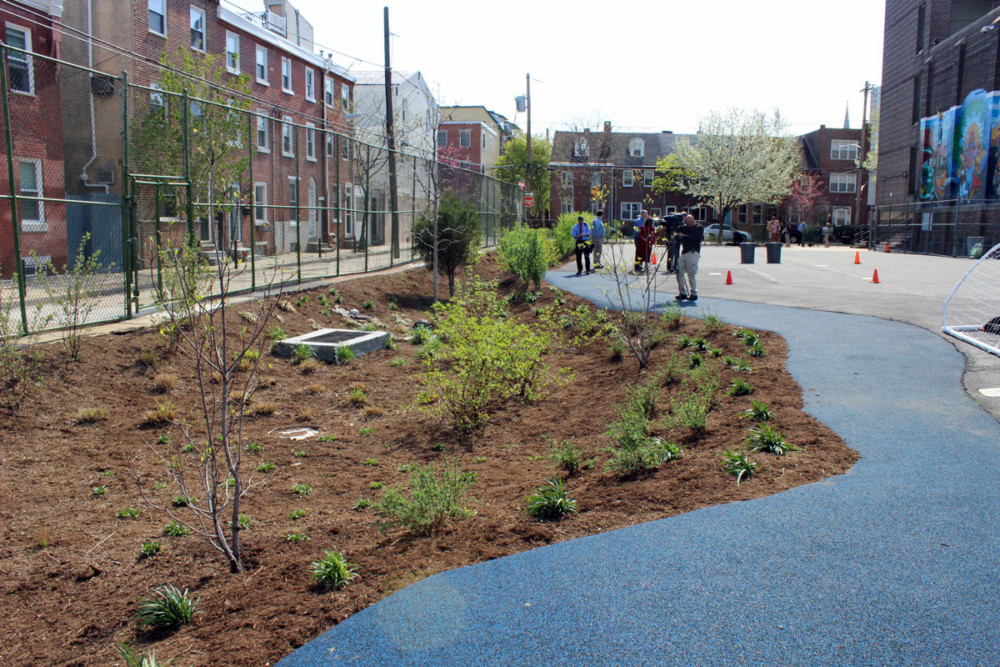
Eco-Explainer: What is a Bioswale?
Learn about this little-known type of GSI
As we consider different types of green stormwater infrastructure, let’s get into a tool that uses natural landscape to manage stormwater.
Bioswales can be installed on any property, from your backyard to the largest city block.
They are effective at filtering pollution and reducing runoff from hard surfaces such as roofs and driveways.
As an added bonus, they can beautify any space!
What is a bioswale?
A bioswale is a shallow, wide ditch planted with vegetation that is adapted to local conditions.
Bioswales can be used to treat stormwater runoff and control erosion. They are often installed along roadways or in parking lots to manage stormwater pollution.
Bioswales work by slowing down the flow of water and filtering out pollutants before it reaches nearby waterways, such as streams and ponds.
The plants growing in the bioswale absorb organic material from rain runoff as well as other nutrients like nitrogen that would otherwise pollute our waterways if released into them untreated.
Bioswales and green stormwater infrastructure
Green stormwater infrastructure is a broad category of land use that improves water quality and reduces flooding.
Green infrastructure can be designed to mimic natural systems, including wetlands and forested riparian areas, or it can be an engineered system. Examples of green stormwater infrastructure include bioswales, rain gardens, infiltration trenches, tree trenches/tree wells, etc.
These practices remove sediments from runoff as well as many harmful pollutants through soil filtration and evapotranspiration.
How does a bioswale work?
A bioswale uses the natural landscape (e.g. grass, trees and plants) to manage stormwater runoff before it enters the sewer system. It’s a great option for residential or commercial properties with limited space.
The natural landscape of the bioswale helps filter out pollutants from rainwater runoff and make sure that it’s cleaner when it flows into lakes, rivers and streams.
In addition to filtering out pollutants from water, these landscaped areas are also beneficial in other ways:
- They provide shade from the hot summer sun
- They create habitat for wildlife such as birds
- They help retain soil moisture during periods of drought
- They reduce noise pollution by dampening sound waves caused by traffic
- They beautify streetscapes by creating attractive pedestrian walkways or landscaping around buildings
Bioswales in Philadelphia
Philadelphia is home to a few bioswales.
A project on North American Street was funded in 2015 as part of Philadelphia’s Green City, Clean Waters program, which aims to reduce pollution in local waterways by installing green infrastructure such as rain gardens and green roofs on commercial buildings throughout the city. Another project was in Cliveden Park, including a rain garden and bioswale.
Bioswales are good in an areas with high pedestrian traffic—and where there are many opportunities for stormwater runoff from nearby buildings—but little open space or vegetation available for managing runoff.
Want to learn more about green stormwater infrastructure and its benefits, check out our other articles on the Delaware Watershed.









